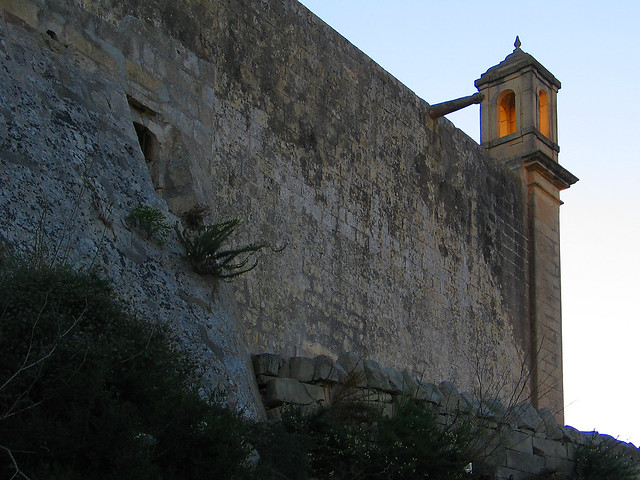If you find yourself near Qrendi with a bit of time on your hands, the enormous sinkhole at il Maqluba is well worth a visit. The hole was formed in 1343 when the roof collapsed on a massive cave. It left a ‘Solution Subsidence Structure’ – a crater hundreds of feet across and between 40 and fifty metres deep.
Il Maqluba is pretty well hidden so you are unlikely to come across it by accident. The easiest way is to follow Triq Il Tempesta – the road that leads to Qrendi from Mqabba and continue with Qrendi on your right side until you come to the chapel of Saint Matthew in a little square (more of a triangle actually). You will find an overgrown path leading to il Maqluba on the left side of the chapel.
There is a simple observation area where you can look out over the crater. The bottom is covered with bamboo, sandarac gum, carob and pomegranate trees. Unfortunately, the last time I visited it was also covered with a certain amount of rubbish.
As well as the strictly geological explanatation for Maqluba’s existance, there is a much more colourful local legend. The short version goes something like this…
“In and around the current site of Maqluba, there was a small hamlet full of wicked people. Exact details of their transgressions are not recorded but, they received several warnings from God through the offices of a virtuous local woman. She was shrugged off as a nosey neighbor so God took direct action by blowing the little village of the face of the planet. The remains landed upside down in the sea off Malta’s southern coast and is today known as the island of Filfla.”
In many arabic dialects, Maqluba means upside down!
Partially hidden by a large wild fig tree, a set of rough hewn steps leads down towards the bottom of Maqluba. I am not sure who cut these stairs but I can think of at least four reasons not to use them.
-
They are steep and worn and definitely not safe.
-
After about 15 meters, the stairs are blocked by a fallen boulder. You can only pass by wriggling underneath this huge stone on your stomach.
-
The steps do not go right to the bottom of the crater. You will have to clamber down the last couple of meters of rocks, ideally leaving a rope so that you can get back up.
-
There is nothing to see at the bottom except rubbish and trees. The views are much better from the top.
Maqluba really is at it’s most spectacular when seen from above but If you are still interested in what it looks like at the bottom, take a look at my short video of when I climbed down with two of my cousins’ hubands and a small dog in summer 2007. It was about 08.00 on a Sunday morning….
Use this Google Map to plan your trip to Maqluba…



